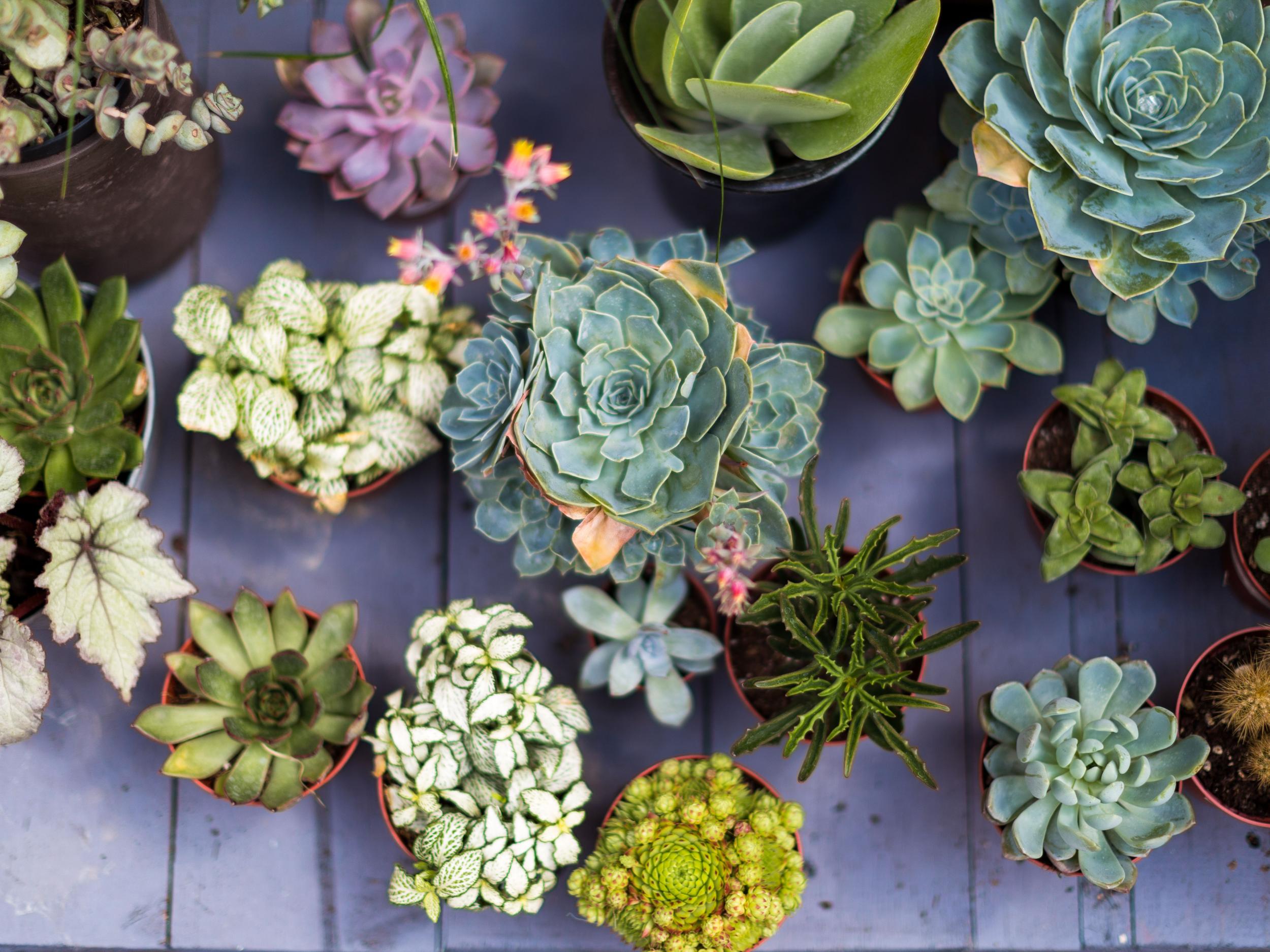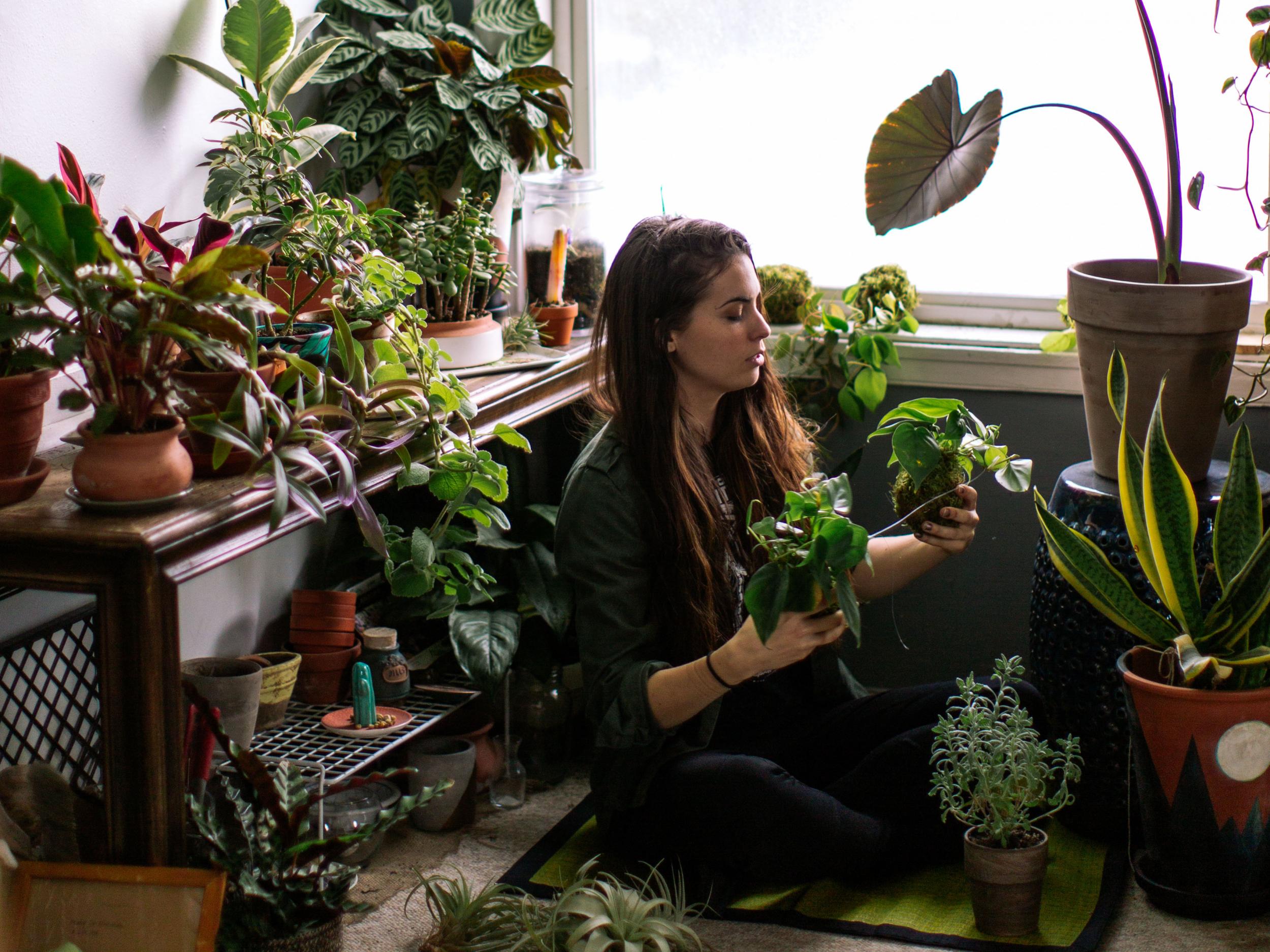How houseplant sellers are using Instagram as a green thumb guide
As millennials continue to purchase more greenery than any other generation, they are seeking out tips on social media to get their plants growing and keep them healthy, writes Sandra E Garcia

Your support helps us to tell the story
From reproductive rights to climate change to Big Tech, The Independent is on the ground when the story is developing. Whether it's investigating the financials of Elon Musk's pro-Trump PAC or producing our latest documentary, 'The A Word', which shines a light on the American women fighting for reproductive rights, we know how important it is to parse out the facts from the messaging.
At such a critical moment in US history, we need reporters on the ground. Your donation allows us to keep sending journalists to speak to both sides of the story.
The Independent is trusted by Americans across the entire political spectrum. And unlike many other quality news outlets, we choose not to lock Americans out of our reporting and analysis with paywalls. We believe quality journalism should be available to everyone, paid for by those who can afford it.
Your support makes all the difference.Ever heard of a plant coach? They don’t wear whistles or train plants to grow. No, they instruct people on which plants will survive in their homes, teaching them how to take care of their chlorophyllous children and the way to style the greenery to their liking.
The playing field for these coaches is often Instagram, which has in many ways become a modern iteration of a department store for young people. Businesses tailored to the platform sell clothes, shoes, makeup, wigs, kitchenware – the list goes on.
And houseplants, popular among millennials, have increasingly taken root on the app. As begonias, monsteras and cactuses join microbladed brows, marble countertops and snow-white apartment walls as hallmarks of the Instagram aesthetic, young entrepreneurs – or plantrepreneurs, as some call themselves – are building businesses selling plants and teaching others how to keep them alive.
In 2018, 18- to 34-year-olds accounted for 25 per cent of total lawn and garden spending in the United States, up from 23 per cent in 2017, according to the National Gardening Association. Last year, millennials spent more than $13bn (£9.9bn) on gardening, the association says. Many nurseries have waiting lists for their most sought-after species.
“Rather than just trying to sell, sell, sell, we create something that is not just about selling plants but is also about education,” says Puneet Sabharwal, 38, who along with Bryana Sortino, 36, runs Horti, a company that offers plants through a subscription service. Horti, which began in 2017 in a Brooklyn, New York, apartment, initially mails customers simple, hardy seedlings. Once their plant-care confidence builds, they are sent species that require higher maintenance.
Sabharwal says that before he and Sortino formed the company, he had noticed that his friends were mostly making their plant decisions in shops, based on the plant’s appearance as opposed to their ability to sustain it.
Owning a plant, in other words, was more about the way it fit into an Instagram square and less about keeping a living thing alive. “What ends up happening is that you buy plants that will end up dying, and it kills a lot of owners’ confidence in plants,” Sabharwal says. “If you get plants that will survive, it will give you this sense that you are doing a great job.”
What ends up happening is that you buy plants that will end up dying, and it kills a lot of owners’ confidence in plants. If you get plants that will survive, it will give you this sense that you are doing a great job
As for the plants that don’t thrive past the initial #plantmom Instagram post, they may even represent a small environmental liability, according to Andrea Ruiz-Hays, the founder of Eco Strategies Group, a consulting firm that works with companies to help them develop more sustainable practices.
“You’re sending additional greens to the landfill,” Ruiz-Hays says. “These plants break down, and they contribute to carbon emissions when it wasn’t needed from the beginning.”
Horti, which says it wants to help customers keep plants out of landfills, is using Instagram to help as much greenery as it can survive. The company’s Instagram account, which has more than 35,000 followers, has become the best way to drive sales, Sabharwal says. “I am running the Instagram account more as a gallery, including what is happening in the larger landscape of indoor planting,” he says.
Sabharwal says that nearly all of the company’s plants are imported from Florida to nurseries on Long Island, New York, that distribute them. “Time is money for most of these growers,” he says.
Perhaps unsurprisingly, nurseries are also eager to profit from the rise of plant sales on social media. Hirt’s Gardens, a plant seller in Ohio that has been in business for 105 years, has experienced a 30 per cent increase in profits over the past decade because of social media, says Matt Hirt, one of the company’s owners.

Hirt, 42, says that the strong sales are in spite of buyers who take advantage of propagation, the ability of certain plant species to spawn new plants from cuttings. (He can tell when someone buys a plant to “love it”, he says, as opposed to buying it simply with a plan to propagate it and sell it forward.)
“It doesn’t take away from my profit,” Hirt says, adding that his internet sales for 2019 were around $1.5m – nearly double the previous year’s. Blane Turiczek, 24, the company’s social media manager, says that customers’ habit of tagging the nursery on Instagram helped keep plants flying out of the greenhouse. “Some of the really cool ones right now have a waiting list,” she says.
A current Instagram favourite, with a six-person waiting list, is the Pink Princess philodendron, a houseplant that sells for $50 in a six-inch pot and has pink and dark green leaves. Some stems unfurl and reveal entirely pink leaves. The nursery usually gets two a week.
A spokeswoman for Instagram says that the company does not have any information about an uptick in plant sales on the platform, but adds that “selling plants is popular on Facebook Marketplace”. (Instagram is owned by Facebook.)
Buying plants on social media carries risk, of course. One danger is plant fraud: you might buy a rare plant as a seedling with the promise that its coveted leaves will eventually show themselves, but it never delivers. “It happens,” says Nick Cutsumpas, a plant coach who goes by @farmernicknyc on Instagram, where he has more than 23,000 followers and finds 90 per cent of his clientele.
“You might be told that this cutting came from a variegated plant, which are rarer and susceptible to disease,” Cutsumpas, 27, says. “You might get a plant that is perfectly green and then two years in, you don’t see anything.” And it may remain a mystery: “You won’t know if you didn’t give it the right environment or if it’s plant fraud,” he says.
But for most people, Cutsumpas say, keeping a plant alive that they bought online should be relatively straightforward, as long as they give it the proper attention. “No one is born with a black thumb,” he says.
© New York Times
Join our commenting forum
Join thought-provoking conversations, follow other Independent readers and see their replies
Comments